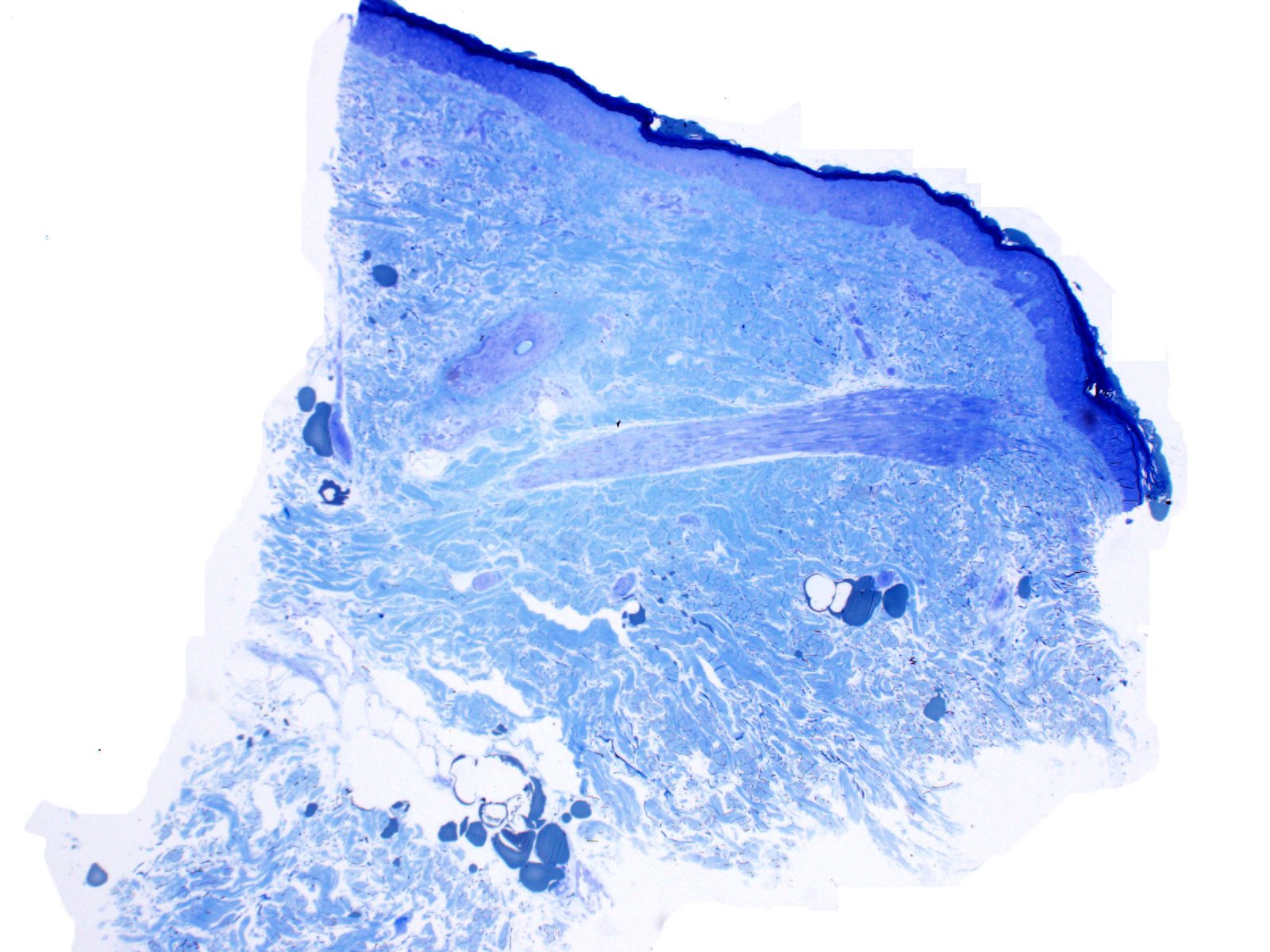The patient is a 45-year-old patient with a history of migraines and several transient ischemic attacks. Their family history was significant for multiple white matter infarcts and progressive cognitive impairment (dementia) in her father.
Based on an abnormality seen on electron microscopy performed on a skin biopsy from this patient (see Figures #1 – #3) which of the following genes is likely to have a pathogenic variant on genetic sequencing?
A. NF1
B. CDKN2A
C. DMD
D. NOTCH3
Answer: NOTCH3
The clinical history and electron microscopic findings are most consistent with the diagnosis of Cerebral Autosomal Dominant Arteriopathy with Subcortical Infarcts and Leukoencephalopathy (CADASIL). This disorder is associated with pathogenic variants involving the NOTCH3 gene.
Reference(s) / additional reading:
Cannistraro RJ, Badi M, Eidelman BH, Dickson DW, Middlebrooks EH, Meschia JF. CNS small vessel disease: A clinical review. Neurology. 2019 Jun 11;92(24):1146-1156. doi: 10.1212/WNL.0000000000007654. Epub 2019 May 29. PMID: 31142635; PMCID: PMC6598791.
Mizuno T, Mizuta I, Watanabe-Hosomi A, Mukai M, Koizumi T. Clinical and Genetic Aspects of CADASIL. Front Aging Neurosci. 2020 May 7;12:91. doi: 10.3389/fnagi.2020.00091. PMID: 32457593; PMCID: PMC7224236.
Choi JC. Cerebral autosomal dominant arteriopathy with subcortical infarcts and leukoencephalopathy: a genetic cause of cerebral small vessel disease. J Clin Neurol. 2010 Mar;6(1):1-9. doi: 10.3988/jcn.2010.6.1.1. Epub 2010 Mar 26. PMID: 20386637; PMCID: PMC2851292.
https://rarediseases.org/rare-diseases/cadasil/
Quick note: This post is to be used for informational purposes only and does not constitute medical or health advice. Each person should consult their own doctor with respect to matters referenced. Arkana Laboratories assumes no liability for actions taken in reliance upon the information contained herein.





